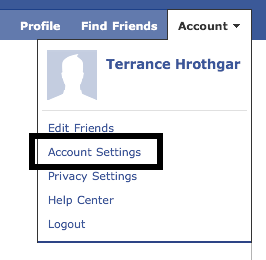Starting sometime mid-year in 2011, I began having more ‘stuff’ to do than even my eidetic memory could help with. It’s not that I forgot things, per se, but the ability to mentally recall and prioritize work, family, personal and other tasks finally required some external assistance and I resolved to find a GTD system by the end of January.
Being an OS X user, there are great choices out there (both of those have iOS sister-apps, too). However, I’m not just an OS X user. As I was saying to @myrcurial (and even @reillyusa) the other day, I dislike being locked in to proprietary solutions. Plus, the $120 price tag for OmniFocus (OS X + iPad) seemed like a king’s ransom, especially since I am also an Android user (OmniFocus only has an iOS app) and pay for both Dropbox and various virtual hosts. Believing that I still have some usable skills left, I decided to — as @hatlessec characterized my solution — cobble something together on my own.
Once upon a time, I did maintain a .plan file (when I had sysadmin duties), but really doubted the efficacy of it and finger in the age of the modern web. The thought of machinating SQLite databases, parsing XML files or even digesting bits of JSON seemed overkill for my purposes. Searching through my Evernote clippings, my memory was drawn back to one of my favorite sites, Lifehacker, which has regular GTD coverage. After re-poking around a bit, I decided to settle on @ginatrapani’s @todotxtapps for meeting the following requirements (in order):
- It uses a plain text file with a simple structure – (no exposit necessary…the link is a quick read and the format will become second nature after a glance)
- It is Free (mostly) – mobile apps are ~$2.00USD each and if you need more than free Dropbox hosting and want a web interface, there are potential hosting costs. If you count your setup time as money, then add that in, too.
- It runs on OS X, BSD, Windows & Linux – no platform lock-in
- It has a thriving community – without being backed by a vendor (like the really
#spiffy@omnigroup), a strong developer & user community is extremely important to ensure the longevity of the codebase. Todo.txt has very passionate developers and users who are very active on all fronts. - It is very extensible & integrable – I used @alfredapps to give me a quick OS X “GUI CLI” to the
todo.shcommands. I built an Alfred keyword for my most usedTodo.txtfunctions along with a generic one to bring upvimin a Terminal.app window for a free-form edit. Alfred’s shell-commands also give me @growlmac integration (so I get some feedback after working with tasks).I also integrated it with @geektool. I won’t steal the thunder from other GeekTool/Todo.txt integration posts (like this one). The GeekTool integration puts my todo’s right in front of me all the time on all my desktops.
By storing my
tododirectory in @dropbox, it also makes syncing to my web site and mobile devices a snap.On my server, I have a simple
cronjob setup to e-mail me my todo’s at the beginning of the day (again, so it’s in front of me wherever I look). - It runs on iOS AND Android – again, no platform lock-in
- There’s an optional web interface – the one I linked to (there are others) is far from ideal, but it was quick to setup and has no overt security issues. Properly protected behind
nginxorapache, you should have no issues if you need to have a web version handy.
So, while the setup is a bit more than just downloading two commercial apps, it has many other benefits and isn’t too much more work if you already have some of the other pieces in place. If you want more info on the Alfred scripts or any other setup component, drop me a note in the comments.
While I’ve read about many GTD solutions and seen many user-stories of how they met their GTD needs, I’d be interested in what tools you use to ‘get things done’…



